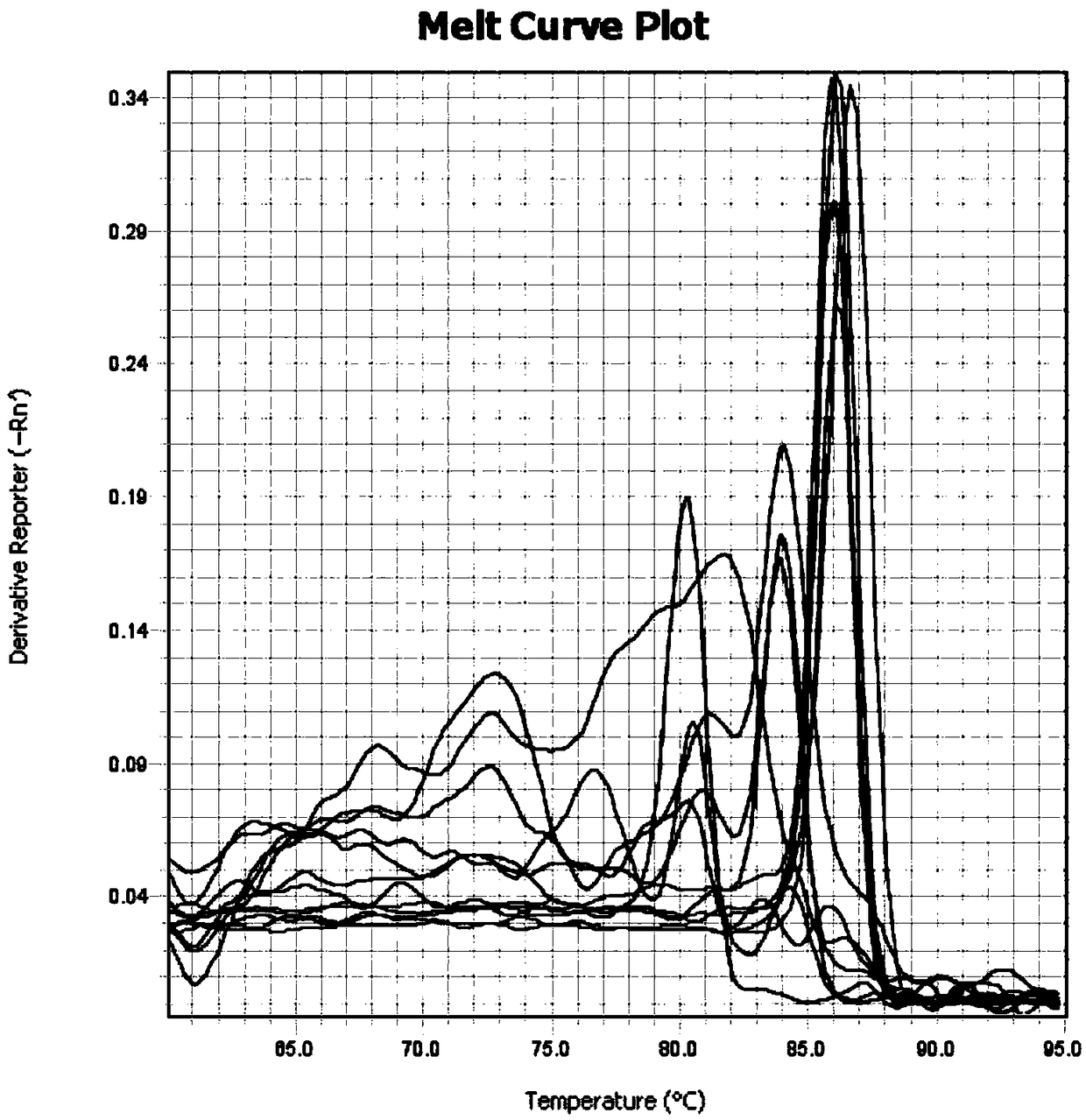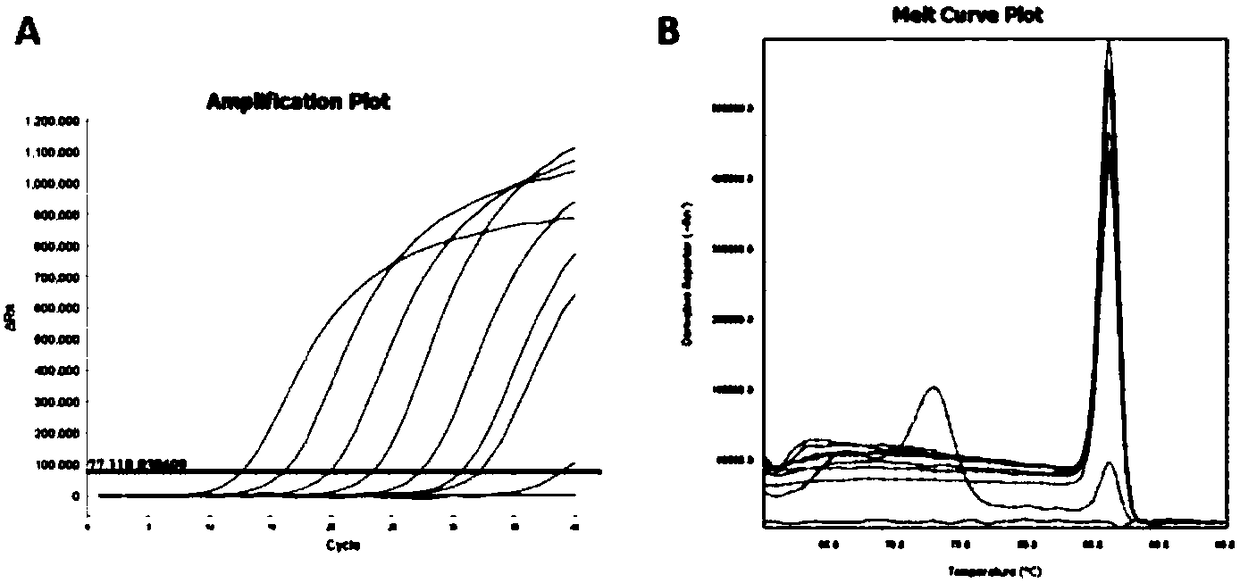Primer set and kit for detecting Zika virus (ZIKV) based on one-step fluorescent quantitative nested RT-PCR
A RT-PCR, fluorescent quantitative technology, applied in the biological field, can solve the problems of detection sensitivity to be improved, cumbersome steps, sample contamination, etc., and achieve high sensitivity, good repeatability, and good primer specificity
- Summary
- Abstract
- Description
- Claims
- Application Information
AI Technical Summary
Problems solved by technology
Method used
Image
Examples
Embodiment 1
[0038] The design and synthesis of embodiment 1 primer
[0039] Using all existing ZIKV full-length genome sequences in GenBank for multiple sequence alignment, select the conserved region (575bp, SEQ ID No: 5) of the ZIKV envelope protein (envelope protein) to design primers (Table 1). Synthetic;
[0040] Table 1 Specific primers for one-step fluorescent quantitative nested RT-PCR detection
[0041]
[0042] M in the primer sequence stands for A or C, R stands for A or G, Y stands for C or T, S stands for C or G
Embodiment 2
[0043] Example 2 Viral RNA extraction and one-step fluorescent quantitative nested RT-PCR
[0044] The viral RNA extraction process was carried out according to the instructions of the QIAamp Viral RNA Mini Kit. One-step fluorescent quantitative nested RT-PCR was carried out with the primer set in Example 1, and the reaction system was as follows:
[0045]
[0046] The reaction conditions are: reverse transcription at 42°C for 10 minutes, pre-denaturation at 95°C for 2 minutes, outer PCR (95°C for 15 sec, 65°C for 15 sec, 72°C for 35 sec) x 15 cycles, inner PCR (95°C for 15 sec, 48°C for 15 sec, 72°C 30sec)×40 cycles, melting curve analysis.
Embodiment 3
[0047] Embodiment 3 one-step fluorescent quantitative nested RT-PCR specificity test
[0048] Select 4 strains of ZIKV (all Asian strains), 1 strain of ZIKV MR_766 (African strain), 4 strains of dengue virus (1 strain for each type 1-4), 1 strain of flavivirus and 1 strain of influenza A virus for H5N6 cell culture After clearing, extract RNA for one-step fluorescence quantitative nested RT-PCR specificity test, each take 1 μL of total RNA as a template for reaction, and nuclease-free dH 2 O is used as negative control; Reaction system and reaction condition are identical with above-mentioned embodiment 2.
[0049] The result is as figure 1 As shown, 5 strains of ZIKV can be amplified specifically, but 4 strains of dengue virus, flavivirus and influenza A virus H5N6 will not be amplified, indicating that the one-step fluorescent quantitative method of ZIKV involved in the present invention Formula RT-PCR primers have good amplification specificity.
PUM
 Login to View More
Login to View More Abstract
Description
Claims
Application Information
 Login to View More
Login to View More - R&D
- Intellectual Property
- Life Sciences
- Materials
- Tech Scout
- Unparalleled Data Quality
- Higher Quality Content
- 60% Fewer Hallucinations
Browse by: Latest US Patents, China's latest patents, Technical Efficacy Thesaurus, Application Domain, Technology Topic, Popular Technical Reports.
© 2025 PatSnap. All rights reserved.Legal|Privacy policy|Modern Slavery Act Transparency Statement|Sitemap|About US| Contact US: help@patsnap.com



